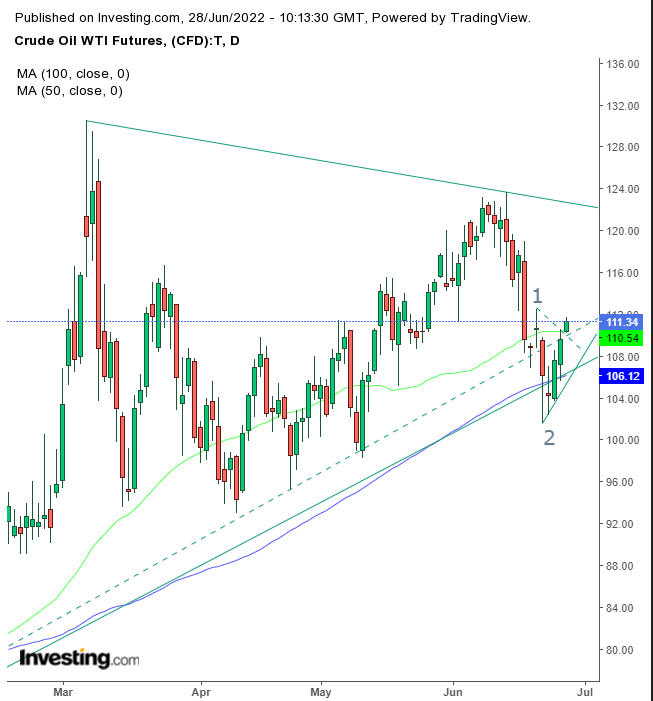Gold prices rise as dollar weakens on Fed easing expectations
The oil market is in disarray as numerous themes collide.
The Energy Information Administration enters a second week of failing to provide data due to a system failure, when information is critical. US refining capacity drops below 18 million barrels daily, its lowest since 2014. This limited production comes amid refinery closures, just as catapulted prices could use more output to ease surging inflation.
China is easing its COVID restrictions, which means the second-largest economy and the world's foremost importer will increase demand.
Libya is suffering from production disruptions amid an escalating political crisis, and protests in Ecuador could stop the production of this former OPEC member.
Saudi Arabia and the United Arab Emirates are unlikely to be able to increase output significantly enough to lower prices with these producing countries out of the mix.
This market failure is prompting G7 leaders, notably French President Emmanuel Macron, to seek to cap prices worldwide. This move could be dangerous as it could exacerbate shortages, which could cause the market to implode.
We witnessed how sensitive the oil market can be in 2020, when contracts fell into negative territory and traders had to pay $40 for the pleasure of owning a barrel of oil.
Let's examine the current price chart.

We interpreted a recent range in the price as a Pennant, a continuation pattern. We expected a downside breakout would be more likely after the short cover was complete. However, the price rose to the topside. Note that the pattern was never finished, as it had only two turning points while a minimum of four is required. Nevertheless, a pause after a whopping 18% downturn in as little as seven sessions provides the space for such market mechanics to take hold.
The pause came at the uptrend line since the December low, between the 100 and 50 DMA—all underscoring the technical importance of this location. If the price breaks through the falling downtrend since the Mar. 7 peak, it will have overcome another technical milestone, evidencing that the longer, rising trend is victorious.
Trading Strategies
Conservative traders should wait for the price to make a new high, past the May 7 peak, to extend the uptrend.
Moderate traders would wait for an upside breakout of the downtrend line since the May 7 high.
Aggressive traders could enter a long position now. Here is a generic sample, but you'll experience much better overall results if you custom-make the plan to your needs, including timing, budget, and temperament.
Trade Sample - Aggressive Long Position
- Entry: $110
- Stop-Loss: $107.50
- Risk: $2.50
- Target: $120
- Reward: $10
- Risk-Reward Ratio: 1:4
